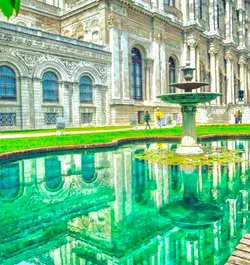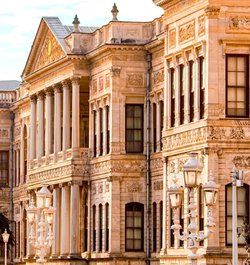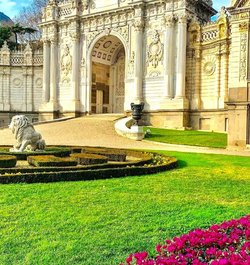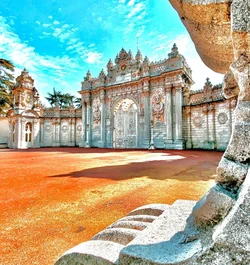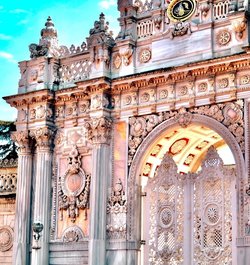Visit the Dolmabahce Palace every day except Mondays at your preferred date and time with your FREE skip-the-line ticket and audio guide. Dolmabahce Palace Museum is closed only on Mondays.
About This Activity
Highlights
- Learn the history and significance of the Dolmabahce Palace from an exclusive audio guide
- See the beautiful furnishings, artworks, and other priceless treasures at your own pace
- Discover hidden stories of the Harem Section and spend as many times as you wish
- Explore without worrying about extra tickets - Dolmabahce Palace and Harem are both included with your QR ticket!
Includes
- Skip-the-ticket-line entry ticket to Dolmabahce Palace & Harem
- Professional audio guide
- Unlimited time in the Palace complex
A Complete Dolmabahçe Palace Experience!
The grand Dolmabahçe Palace was the last and likely most expensive residence of the Sultans of the Ottoman Empire. It has 285 rooms, 44 halls, 68 toilets, and six hammams (Turkish baths) and is set along the beautiful waters of the Bosphorus. There are many beautiful furnishings, artworks, and other priceless treasures on display but one of the most spectacular is the 4.5-tonne crystal chandelier hanging in the Grand Ceremonial Hall. It's the largest chandelier in the world!
When the Ottoman Empire came to an end and the Turkish Republic was formed, the Palace was used as a State Residence for visiting dignitaries. Later, it became the Presidential Residence of Atatürk in Istanbul. Today, Dolmabahçe Palace has been completely restored and is a very popular museum.
The Harem section of the Dolmabahçe Palace was the private residence of the Ottoman Sultan's family, including his mother, wives, children, and other favorites. This lavishly decorated wing of the palace was strictly off-limits to outsiders, ensuring privacy for the royal occupants. The Harem features opulent rooms adorned with gold, crystal, and intricate furnishings.
An amazing self-guided skip-the-line experience of Dolmabahçe Palace is waiting for you!
For this amazing experience and more, Buy Your Pass Now! Istanbul Tourist Pass® is here to make your Istanbul trip an unforgettable experience!
Times & Duration
Dolmabahce Palace Museum is open every day (except Mondays) between 9.00 AM and 5.00 PM
The museum is closed on New Year's Day and the first days of the national holidays.
Please allow 2-3 hours to fully appreciate the beauty of the Palace and Harem.
Where You'll Be
How to Get There?
Getting to the Dolmabahce Palace Museum Skip-the-Ticket-Line Entry with Audio Guide is convenient and accessible from various parts of Istanbul. Here’s a guide to help you reach this iconic landmark:
Getting to Dolmabahçe Palace Museum is straightforward and convenient from various parts of Istanbul. Here’s a guide to help you reach this iconic landmark:
Tram: Take the T1 Tram Line (Bağcılar-Kabataş) and get off at the Kabataş stop, the final station. From there, it’s a short 5-minute walk to Dolmabahçe Palace.
Metro: Use the M2 Metro Line and get off at Taksim station. From Taksim, you can either walk downhill for about 20 minutes or take the funicular to Kabataş and follow the tram directions.
Bus: Many bus lines heading towards Kabataş or Beşiktaş stop near Dolmabahçe Palace. Check for buses that pass along the Bosphorus shore.
Taxi: Taxis are readily available across Istanbul. Inform the driver you’re heading to Dolmabahçe Sarayı near Kabataş. Always ensure the taxi meter is on to avoid overcharging.
On Foot: If you’re staying in areas like Taksim or Beşiktaş, Dolmabahçe Palace is within walking distance. Follow the scenic Bosphorus shoreline for a pleasant stroll.
Visit early in the day to avoid crowds and enjoy unobstructed views of the palace's grandeur and the Bosphorus.
All About Dolmabahce Palace
Historical and Architectural Construction of Dolmabahçe Palace
The grand Dolmabahçe Palace was the last and likely most expensive residence of the Sultans of the Ottoman Empire. It has 285 rooms, 44 halls, 68 toilets, and six hammams (Turkish baths) and is set along the beautiful waters of the Bosphorus. There are many beautiful furnishings, artworks, and other priceless treasures on display but one of the most spectacular is the 4.5-tonne crystal chandelier hanging in the Grand Ceremonial Hall. It's the largest chandelier in the world!
You will notice that Dolmabahçe Palace has a more European style than Topkapı Palace. In the 19th century, Sultan Abdül Mecit hired Armenian architects, a French decorator, and European artists to build a modern Palace like those of other European Monarchies. The result is the unique mix of traditional Ottoman and Western European styles you see today.
When the Ottoman Empire came to an end and the Turkish Republic was formed, the Palace was used as a State Residence for visiting dignitaries. Later, it became the Presidential Residence of Atatürk in Istanbul. Today, Dolmabahçe Palace has been completely restored and is a very popular museum.
Dolmabahçe Palace has a major role in Turkish history and that’s why it is one of the most important tourist attractions of Istanbul. The lands on which the palace was built as a small bay before the conquest of Istanbul and its surroundings were called Vallicula Regii Horti (small valley of the royal garden). It is claimed that the conquest of Constantinople started here via disembarking the ships to the Golden Horn, which was one of the most important factors in the success of Mehmed the Conqueror in seizing the city. According to Evliya Çelebi, the bay was built in the XVII century. It was filled during the reign of II. Osman (1618-1622) and the coast gained a new look.
Harem Section of the Dolmabahçe Palace
The Harem section of the Dolmabahçe Palace served as the elaborate and secluded residence of the Ottoman Sultan's extended household, including his mother, wives, children, concubines, and other favorites. Designed for both privacy and opulence, this wing of the palace was a world apart, inaccessible to those outside the royal circle. The Harem features richly decorated rooms adorned with gold embellishments, sparkling crystal, fine carpets, and luxurious furnishings, reflecting the wealth and extravagance of the Ottoman Empire. Intricate tiles, painted ceilings, and sweeping views of the Bosphorus Strait add to the Harem's allure. This section provides a fascinating glimpse into the private lives and hierarchical structures within the Sultan's inner circle. Tickets to the Harem section are NOT included with your Pass!
Dolmabahce Clock Museum & Painting Museum
Dolmabahce Palace architecture enchants everyone who sees it. It can make you feel as if you lived in the past with its different sections and many rooms. One of the places you should see when you come to Dolmabahce Palace is Dolmabahce Clock Museum. In 2004, a museum with the National Palaces Clock Collection was opened in the building, specifically in the Harem garden. Dolmabahce Clock Museum is the only clock museum in Turkey. Besides Ottoman works, you can also see European works. The collection of 71 different clocks of 18th and 19th-century works attracts attention.
Dolmabahce Palace Painting Museum, in the heir apartment, has pictures showing the stages of the Ottoman Empire. There are portraits of Sultan Abdulmecid and Sultan Abdulaziz at the entrance. It is possible to see the paintings of different civilizations, such as works from the Goupil Art Gallery in Paris, as well as works that symbolize Westernization in the Ottoman Empire, and paintings from Istanbul.
A Palace which Hosted the Great Ottoman Sultans
Abdülmecit was the first to live in Dolmabahce Palace and also carried out his official work here. After Abdulmecit, his brother Abdülaziz lived in this palace. One of the reasons why Dolmabahce Palace is important for the Turkish nation is that Mustafa Kemal Ataturk died there. It was also used as Ataturk's presidential residence in Istanbul. Dolmabahçe, which was used as a private garden at first, started to be filled with buildings built by various Ottoman Sultans over time. The first known structure is the II. Selim's mansion. In 1680, the pavilion belonging to IV. Mehmed was destroyed after a while due to its low use and the negative effect of humidity on the wooden material. the buildings you will see inside Dolmabahce Palace are the Harem, Mabeyn, Clock Tower, and Dolmabahce Mosque. The palace has 285 rooms and 46 lounges, 6 baths, and 68 toilets, and the palace is built on an area of 110 thousand square meters.
In 1715, as an addition to this pavilion, which was repaired for the residence of III. Ahmed, two more large buildings were built by I. Mahmud. In 1741, the Sultan used these spaces only in the summer. The buildings around Dolmabahçe started to expand with the additions made during the III. Osman's period burned down as a result of a fire in 1775. The masonry of the buildings, which were reconsidered with III. Mustafa's accession to the throne was repaired and new pavilions were added to them.
The building was also a summer palace, which was commissioned by III. Selim to the architect Melling. The palace started featuring some elements of the European architectural understanding of that period via renovations and add-on buildings. The first Sultan who thought to use this building complex continuously in the Dolmabahçe region was II. Mahmud. For this purpose, the palace was renovated in 1809 and some additions were made and it was brought to a level that could meet new needs.
Raised with a Western upbringing and understanding, his father II. Abdülmecid ordered the demolition of this wooden palace and the construction of today's masonry palace after he took the throne. Abdülmecid gave this order right after he acceded to the throne, and the new palace was built and decorated in the style of European palaces with a planimetry and architectural understanding completely different from the historical Topkapı Palace.
That was because of the Western influence on Sultan Abdülmecid and his desire to become a European. He wanted to show the world that he would rule the state with the Western mentality. The old palace was demolished and the construction of the new palace started in 1842 when the sultan moved to Yıldız Mansions for a temporary period. The new palace was opened on 7 June 1856. The construction of the palace, which has left its mark on the period in terms of both interior and exterior arrangements, with all its sub-units, was undertaken by the father and son Armenian architects Garabet and Nikogos Balyan, and the interior decoration was done by the decorator of the Paris opera house, Ch. Séchan.
At this point, as a tourist, you should also see, one of the best places to visit in İstanbul: Topkapı Palace to compare the architectural differences between the traditional and modern Ottoman palaces. With the Istanbul Tourist Pass®, you can enjoy exploring how different Topkapı Palace is from Dolmabahçe Palace.
Step by Step to Nowadays
Dolmabahçe Palace, which is a monumental structure with all its spaces, was used in thirty-five of the sixty-eight years that passed from its construction until the date when Caliph Abdülmecid Efendi left here in 1924. Six Sultans and the last caliph lived here.
The palace, which was included in the scope of "national palaces" after the founding of the Republic, was used as a summer workplace for the president. Especially during Atatürk’s period it was mostly used to welcome foreign statesmen and was also the scene of the First Language and History conventions chaired by Atatürk.
The palace, about which it was decided to open and close to the public for a long time, was the subject of discussion at the National Palaces Symposium held in 1984. Later on, the studies were carried out in line with the decisions taken at this symposium.
Behind the Muayede Hall, the group of buildings consisting of the Birdhouse, Bird Pavilion, Bird Hospital, and Glass Pavilion belonging to the period of Sultan Mehmed Reşad was restored and brought back to its original functions.
The lower floor of the corridor was also repaired and put into service primarily as a gallery with bird paintings and photographs. A cafeteria was opened in the historical greenhouse located here, and these side units of the palace were started to be used as an international cultural center.
Visiting Dolmabahce Palace
An amazing self-guided skip-the-line experience of Dolmabahce Palace is waiting for you with your pass! How long to visit Dolmabahce Palace? If you are wondering about this, it takes 2-3 hours to fully discover the Palace. You should definitely see the various sections inside the Dolmabahce Palace. You can start with the Dolmabahce Palace Harem and see the blue hall and the pink hall. The rooms here are called the Hunkar office and the private office. The room where Ataturk passed away is the special room number 71. Atatürk's working room and bedroom have been preserved to this day. You may be interested in the wristwatch in the room. You should not leave Istanbul without seeing the palace where the memories of the Ottoman Sultans and the Republic period are remembered. You can get a lot of historical and architectural information from your audio guide.
You can spend full hours in Istanbul if you are interested in history or architecture and you can gain a different perspective by visiting the Dolmabahce Palace. Since Dolmabahce Palace is the symbol of modernization in the Ottoman Empire, it is possible to see different architectural structures with it.
Know Before You Go
- This is not a guided tour. Enjoy discovering Dolmabahce Palace at your own pace by listening to the specially curated Audio Guide.
- The QR tickets are only shown when you are in close proximity to the entrance of Dolmabahce Palace.
- You need an Internet connection on your smartphone to get your QR tickets. For unlimited internet access get your mobile hotspot device with a discount here.
- Children will be asked to present their valid passports at the entrance of the museums in order to validate their age. Children under 5 can enter the museum for free.
- The museum is closed for visits on the first day of Ramadan and Sacrifice Festivals.
- You can buy your online ticket separately from the Istanbul Tourist Pass®

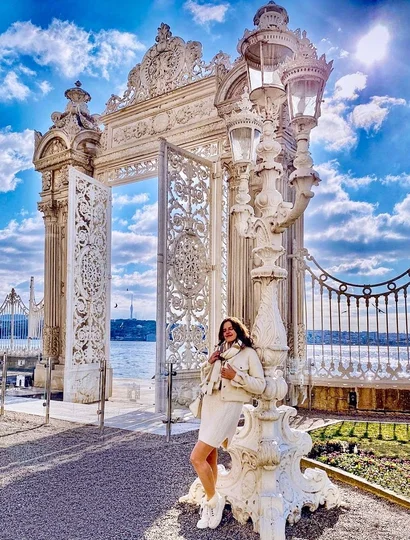
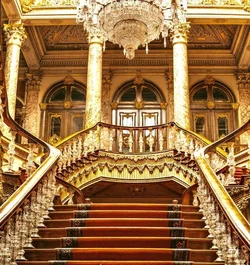
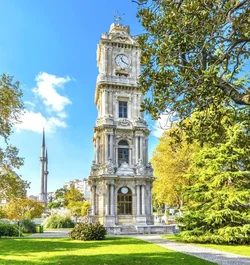
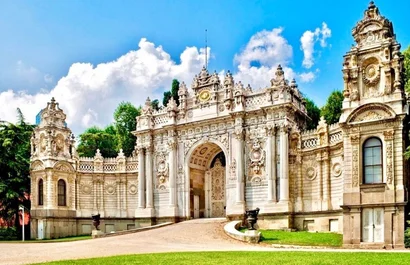
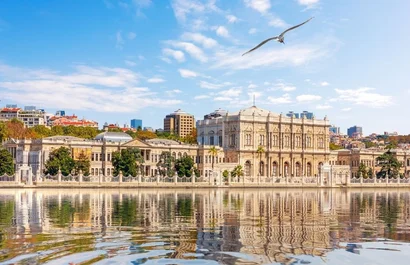
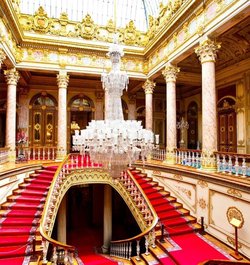
.jpg)
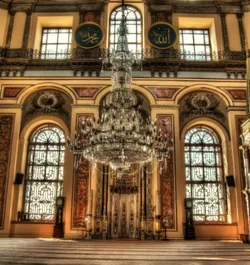
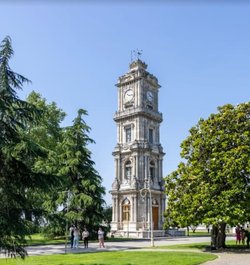
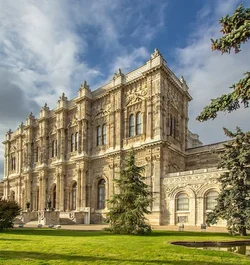
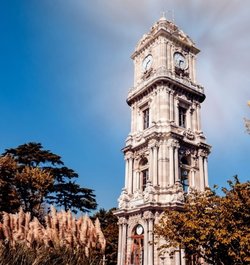
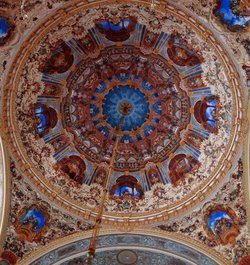
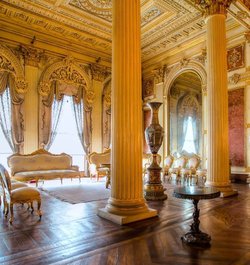

.jpg)
.jpg)
